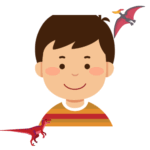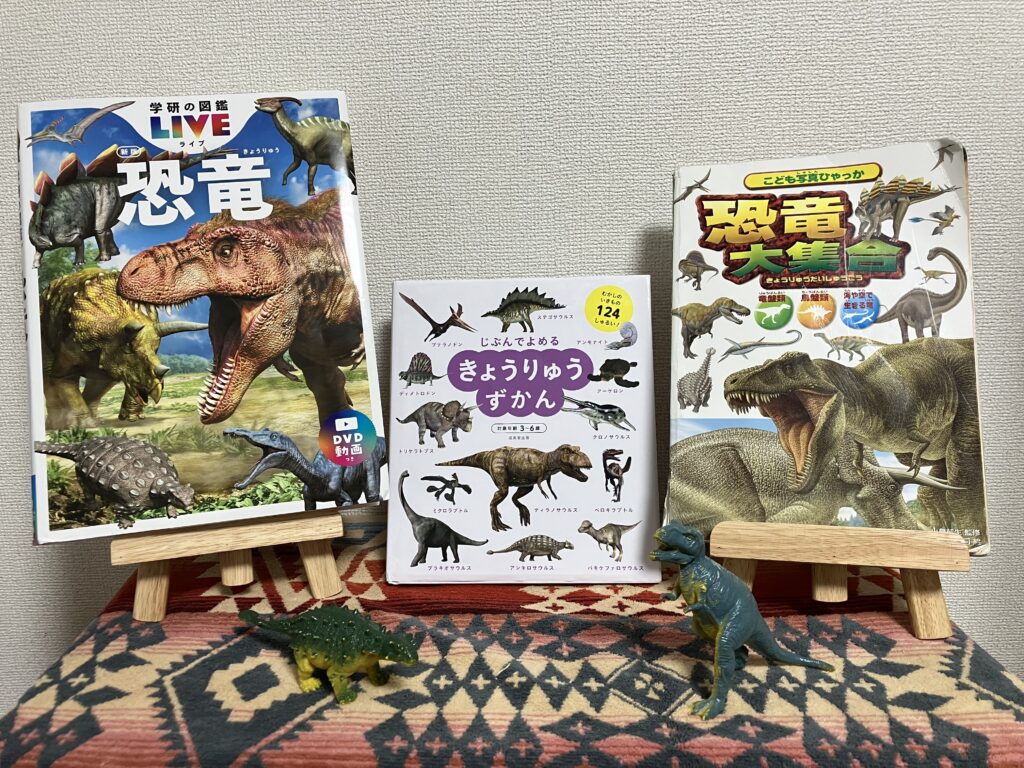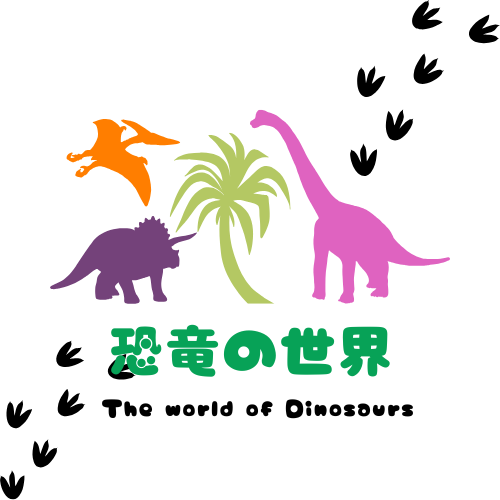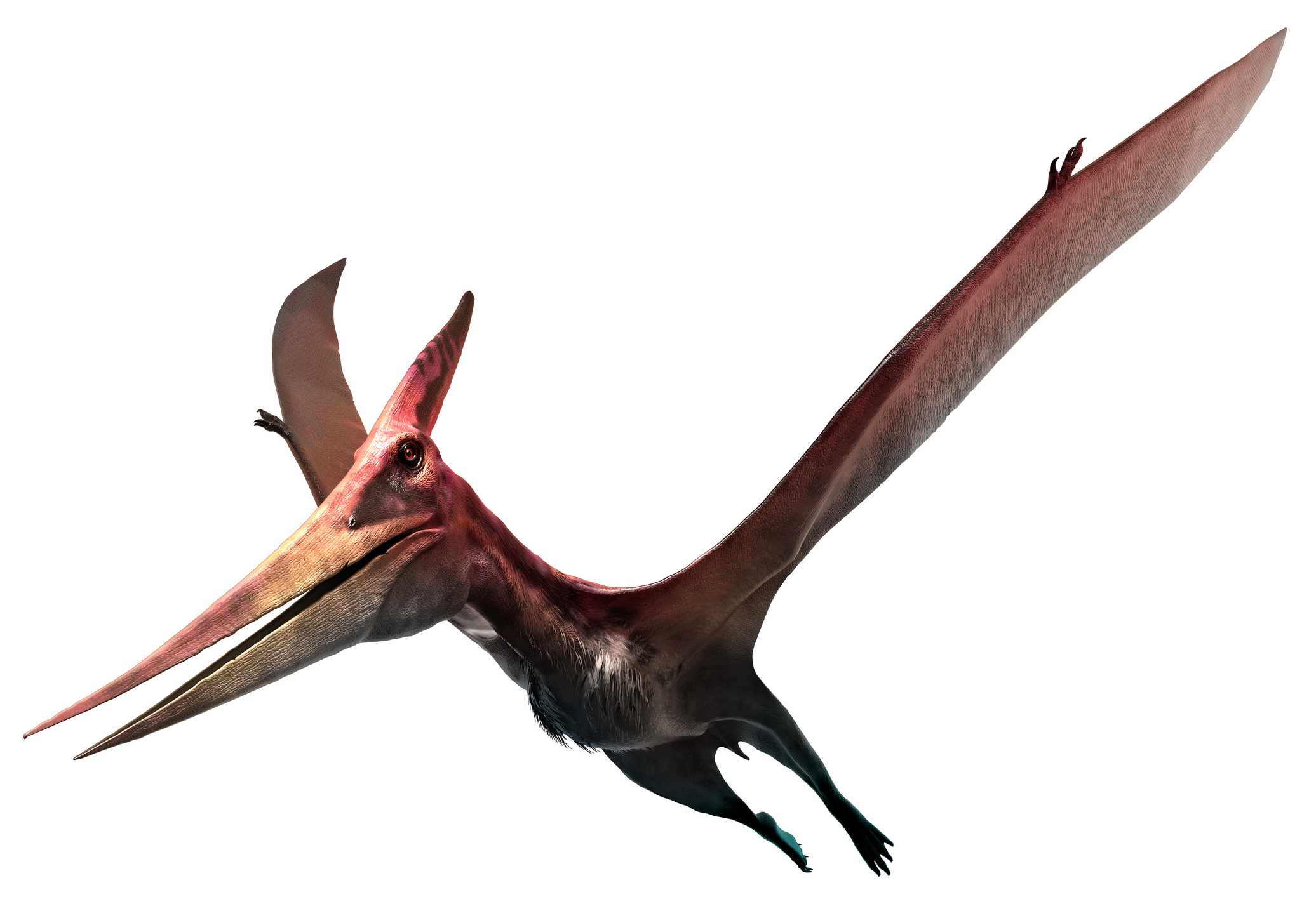📝基本情報(Basic Information)
・生物分類:プテラノドン科 (Biological classificatio:Pteranodontidae)
・体長:約6〜7メートル 翼を広げた長さ (Body length:Approximately 6 to 7 meters in wingspan. wingspan)
・体重:およそ15〜25kg程度 (Weight:approximately 15 to 25 kilograms)
・高さ:登頂まで1.5~2m (Height:Approximately 1.5 to 2 meters tall at the top of the head.)
・生息地:北アメリカ (Habitat:North America )
・時代:白亜紀後期 約8500万〜7000万年前 (Epoch:Late Cretaceous period, approximately 85 to 70 million years ago. )
・食性:魚食性 (Diet:piscivorous)

幾つかの恐竜の映画だと岩と岩の谷間に群れで生息しているところをよく見ますが、実際は海や湖の近くで生活していて、魚を空中から見つけて捕まえていたと考えられています。水面に浮かびながら魚を捕食していたとされる説もあるようですよ。
(In some dinosaur movies, you often see them living in groups in valleys between rocks, but in reality, it is believed that they lived near seas or lakes and spotted fish from the air to catch them. There is also a theory that they floated on the water’s surface while hunting fish.)
👀特徴(Feature)
・トサカ:頭の後ろに長く突き出た「帆」や「槍」のような細長い骨。個体によって異なるが、オスの方が大きくて長い。トサカの役割は、①飛行中のバランス調整説(尾翼のような役割)➁性的アピール説(オス同士の競争・求愛)➂種の識別説 のように様々な説があります。 (Crest: A long, protruding bone at the back of the head, shaped like a “sail” or a “spear.” Its size and shape vary between individuals, but males typically have larger and longer crests. There are several theories about the function of the crest:①to help with balance during flight (acting like a tail fin),➁for sexual display (competition among males or courtship), ➂for species identification.
・口ばし:プテラノドンは歯は一切ありません。「プテラノドン」という名前も「翼を持つ歯のない者」という意味のようですね。歯がないことと、くちばしが細く軽量なのは、重たい歯や顎の筋肉を持つより、軽い頭部で空中を効率よく移動するためと考えられていますね。
(Beak: Pteranodons had no teeth at all. In fact, the name “Pteranodon” means “toothless winged one.” The absence of teeth and the presence of a narrow, lightweight beak are thought to have helped them move more efficiently through the air, as a lighter head was more advantageous than having heavy teeth and strong jaw muscles.)
・飛行能力:鳥のように羽ばたいて飛ぶ能力と、風を利用したグライダー飛行にも長けていたと推測されています。プテラノドンの翼は、小指がものすごく長く伸びていってそこに皮膜を張った構造になっているようです。 (Flight Ability: Pteranodons are believed to have been capable of both flapping flight like birds and efficient gliding by using wind currents. Their wings were structured with an extremely elongated fourth finger, over which a membrane was stretched to form the wing surface.)

プテラノドンの飛び立ち方は、2足でジャンプしたわけではなくて、前脚を使った4足で飛びたったらしいですよ。まったく想像がつかないですよ。
( It seems that Pteranodons didn’t launch into the air by jumping on two legs like birds, but instead took off using all four limbs, including their front legs. It’s quite hard to imagine, isn’t it?
🐱🏍飛ぶ速さ:推定飛行速度(Running speed :estimated running speed)
平均の飛行速度は平均時速 50〜80 km、最大滑空速度は100㎞以上になったようですね。現代の鳥でいうと鳩が約60〜80 km/hなので、ちょうど同じくらいの速さですね。 (The average flight speed was around 50 to 80 km/h, and the maximum gliding speed reportedly exceeded 100 km/h. For comparison, modern pigeons fly at about 60 to 80 km/h, so it’s roughly the same speed.)

プテラノドンは数時間から10時間以上連続で飛ぶことが出来た可能性があるらしいですよ。その飛行距離は数百kmから1000km以上移動できたと言われています。東京から九州くらいの距離を休みなく飛べたってことですよね。まさに体力オバケですね。
(It’s said that Pteranodon may have been able to fly continuously for several hours to over 10 hours. Its flight range is estimated to have been several hundred kilometers to over 1,000 kilometers. That means it could have flown non-stop from Tokyo to Kyushu — truly an endurance monster!)
💡プテラノドンの産卵方法は?(How did Pteranodon lay eggs?)
プテラノドンは他の翼竜や恐竜と同じく、卵で繁殖していたと考えられています。しかしプテラノドンの卵の化石そのものは見つかっていないようですね。なんとも不思議ですね。 卵を産む場所は、現代の鳥やワニを参考にすると、地面や砂地に浅い巣穴を作って産卵していたと考えられているらしいです。 (Pteranodon is believed to have reproduced by laying eggs, just like other pterosaurs and dinosaurs. However, no actual Pteranodon egg fossils have been found, which is quite a mystery. Based on comparisons with modern birds and crocodiles, it’s thought that they laid their eggs in shallow nests on the ground or in sandy areas.)

一部の研究では、「生まれた直後から飛ぶことが可能だった(超早熟型)」という説があるそうですね。もしそうなら鳥で見られるような、雛の時代に親の世話を受けることはあまりなく、自立した可能性が高いとうことですね。親としてはなんとも寂しい限りですね😅
(Some studies suggest that Pteranodon may have been capable of flight immediately after hatching—what’s known as a ‘super precocial’ type. If that’s true, they likely didn’t receive much parental care during their chick stage, unlike many modern birds. That would mean they were quite independent from the start—probably a bit lonely for the parents, though 😅)
💡翼竜と恐竜の違いは?(What is the difference between pterosaurs and dinosaurs?)
同じ時代を生きた翼竜と恐竜ですが、両方爬虫類であることには変わりないです。明らかに違うのは、生活場所が陸上か空かの違いですよね。間違ってはいけないのが、翼竜は空を飛ぶ恐竜ではないということ。翼竜は翼竜、恐竜は恐竜であって、空を飛んでいるからといって翼竜が今の鳥の祖先ではなく、鳥の祖先は恐竜となります。 (”Pterosaurs and dinosaurs lived during the same time period and were both reptiles. The most obvious difference is their habitat—dinosaurs lived on land, while pterosaurs lived in the sky. One important thing to remember is that pterosaurs were not flying dinosaurs. Pterosaurs are pterosaurs, and dinosaurs are dinosaurs. Just because pterosaurs could fly doesn’t mean they were the ancestors of modern birds—birds actually evolved from dinosaurs.)

プテラノドンと初期の鳥類は、同じ時代を生きていましたが、しっかりとすみ分けをしていてうまく共存していた可能性が高いようですね。とっても興味深いのが、プテラノドンを筆頭にした翼竜は白亜紀後期に絶滅したけど、鳥類は生き残ったという事実….同じ空を飛ぶ生き物なのに不思議ですよね。
(Pteranodon and early birds lived during the same period, but it’s likely that they coexisted peacefully by occupying different ecological niches. What’s especially fascinating is that while pterosaurs like Pteranodon went extinct in the Late Cretaceous, birds managed to survive. It’s quite a mystery, considering they were both flying creatures sharing the same skies.)
📚参考図書(reference book)
- 学研の図鑑LIVE 恐竜 総監修 真鍋真(国立科学博物館) 学研プラス
- こども写真ひゃっか 恐竜大集合 監修 小畠郁生 永岡書店
- きょうりゅうずかん(対象年齢3~6歳) 成美堂出版

恐竜にはまったきっかけは2人の息子です。7歳の長男と4歳の次男にせがまれ恐竜の本を読み聞かせていたら、いつのまにか自分が恐竜の虜になっていました。 (The reason I became fascinated with dinosaurs is because of my two sons. My 7-year-old eldest son and 4-year-old youngest son kept asking me to read dinosaur books to them, and before I knew it, I had become completely captivated by dinosaurs myself.)
恐竜のことをもっともっと知りたい方にオススメな図書です。写真や絵ががいっぱいあってとってもわかりやすく書いてあります。 (Here are some recommended books for those who want to learn more about dinosaurs. They are filled with lots of photos and illustrations, and they are written in a way that is very easy to understand.) ↓↓↓↓↓↓↓↓↓↓↓↓↓↓↓↓↓↓↓↓↓↓↓↓↓↓↓↓↓↓↓↓↓↓↓↓↓↓↓↓↓↓↓↓↓








コメント